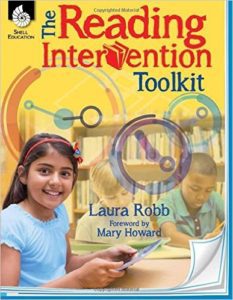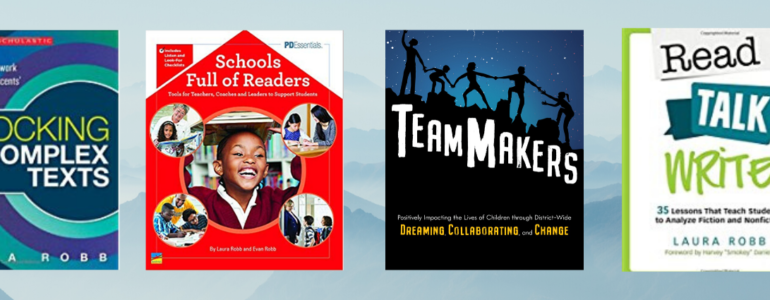By Laura Robb
Teachers, school leaders, parents, and children are facing many challenges after states shut down schools to keep everyone safe during the COVID-19 pandemic.
The saying, “Necessity is the mother of invention,” has transformed educators, parents, and students into the pioneers of remote learning for primary, intermediate, middle, and high school students. We’re figuring out how to help different age groups learn and what kinds of materials teachers and students need. Time and schedules are issues. Materials are issues. Figuring out the WHY, WHAT, and the HOW of presenting lessons remotely are challenges we’re just starting to understand. Moreover, all of these are stress-makers that affect the emotional well being of teachers, school leaders, children, and parents. Here are some tips for maintaining balance and wellness.
- Stay connected to family, friends, colleagues, and students through social media, email, texting, and telephone calls and you’ll be able to hold onto that physical sense of community you had to give up.
- Get exercise. Walk, work out with a video, ride your bike, and try to get fresh air every day.
- Set aside time to do something for yourself: read, watch a movie, listen to music, play an instrument, paint, keep a journal.
- Try to establish a teaching schedule and know that you will have to refine and adjust ideas. Remember, you are a modern-day explorer trying to develop remote learning that works and redefining what community means!
Keep records of what you tried: save teaching videos, keep notes on lessons that worked and those that need improvement, collect student feedback, debrief with your school team, department, and/or colleagues you usually converse with. Know how much students, parents, and your community appreciate what you are doing! Then, it’s important to prepare for the possibility that school might close again and discuss and reflect on re-envisioning teaching and learning.
Re-Envisioning Teaching: Remote Learning
It might seem odd for me to ask you to think about what might happen in the future now. Unfortunately, due to the rapid advance of COVID-19, we were all caught with little preparation time. Once things return to normal, it’s human nature to forget the difficulties faced by many. However, by keeping good records from your remote learning experiences, you will be ready to work with your school’s leaders and staff to help them plan for the future. What follows are fifteen areas that will most likely need rethinking. Read them. Choose those that apply to you and jot some notes that you can share so when your district is ready to discuss these, you will have much to contribute.
Fifteen Aspects of Remote Learning to Explore
- Preservice Education. Colleges and universities need to have remote learning classes for different subjects and age groups in order to prepare teachers to teach and support students online.
- Remote Professional Learning for School Leaders and Staff. It’s beneficial for staff to meet, and pool what they’ve learned from their remote teaching experiences. Equally important is for school districts to develop remote learning online classes teachers can take as well as lead.
- Create a School Pandemic & Epidemic Playbook. Develop “to do’s” for school leaders, teachers, staff, students, and parents so if you only have a short window prior to closing your school, everyone leaves with the materials they’ll need.
- Broadband for All. Ensure that all of rural America and urban families living in poverty have access to the Internet.
- Access and Equity. All students need to have access to computers and the Internet for equity and access to lessons to exist with remote learning. District and school leaders need to explore ways to connect all school children to online learning.
- Attendance Issues. Districts need to determine ways to require attendance to online lessons. Some teachers tell me that only 1/3 to 1/2 of their students are joining lessons even though they have computers.
- School E-Library. Consider having a part of the library’s books and magazines in e-book format, too. This can enable students to access books for independent reading and for research projects. Try forging a partnership with your community public library to gain access for students and teachers to their e-books.
- Independent Reading. You’ll want to maintain students’ volume and interest in reading. Teachers can send books home with children before schools close, but schools can also explore websites that have e-picture books and e-chapter books for all subjects. With students’ help, teachers can find ways for students to share one to two books a month online with classmates.
- Instructional Learning in All Subjects. Departments can collaborate to pool ideas and develop remote learning techniques that work when a teacher is not present. Sharing what you find works with colleagues is important.
- Conferring. Discuss whether this can occur for middle and high school where teachers can have 70 or more students. What accommodations should be made? What will it look like for grades K to 5?
- Interventions. These are important for all students who require assistance and some re-teaching. Will there be a daily time in the schedule? Will interventions be scheduled as needed?
- Teaching & Learning Schedules. Make these reasonable and consider that most parents are working remotely or on a job. How can flexibility be integrated into schedules?
- Television Classes. Look into state or county-run television stations to explore how these can be used for remote learning and reach larger audiences.
- Teachers Meet & Dialogue. Finding time each week to have a virtual meeting to discuss teaching techniques and students’ progress.
- School Leaders Provide Support. School leaders can explore ways to support teachers, students, and parents so all maintain a positive outlook.
Closing Thought
As you embark on this unchartered journey, let me share a reminder–care for your emotional wellbeing and your health, so you can support your students and colleagues, and also have time to connect with family and friends. This is your new frontier! By collaborating and reflecting on your teaching and students’ learning, you will make a huge difference in their lives and construct the foundations of remote learning for future generations!
Laura has written many excellent books! Check out The Reading Intervention Toolkit

Follow Laura on Twitter @LRobbTeacher
Follow Evan onTwitter @ERobbPrincipal
Follow The Robb Review Facebook Page!
![]()













